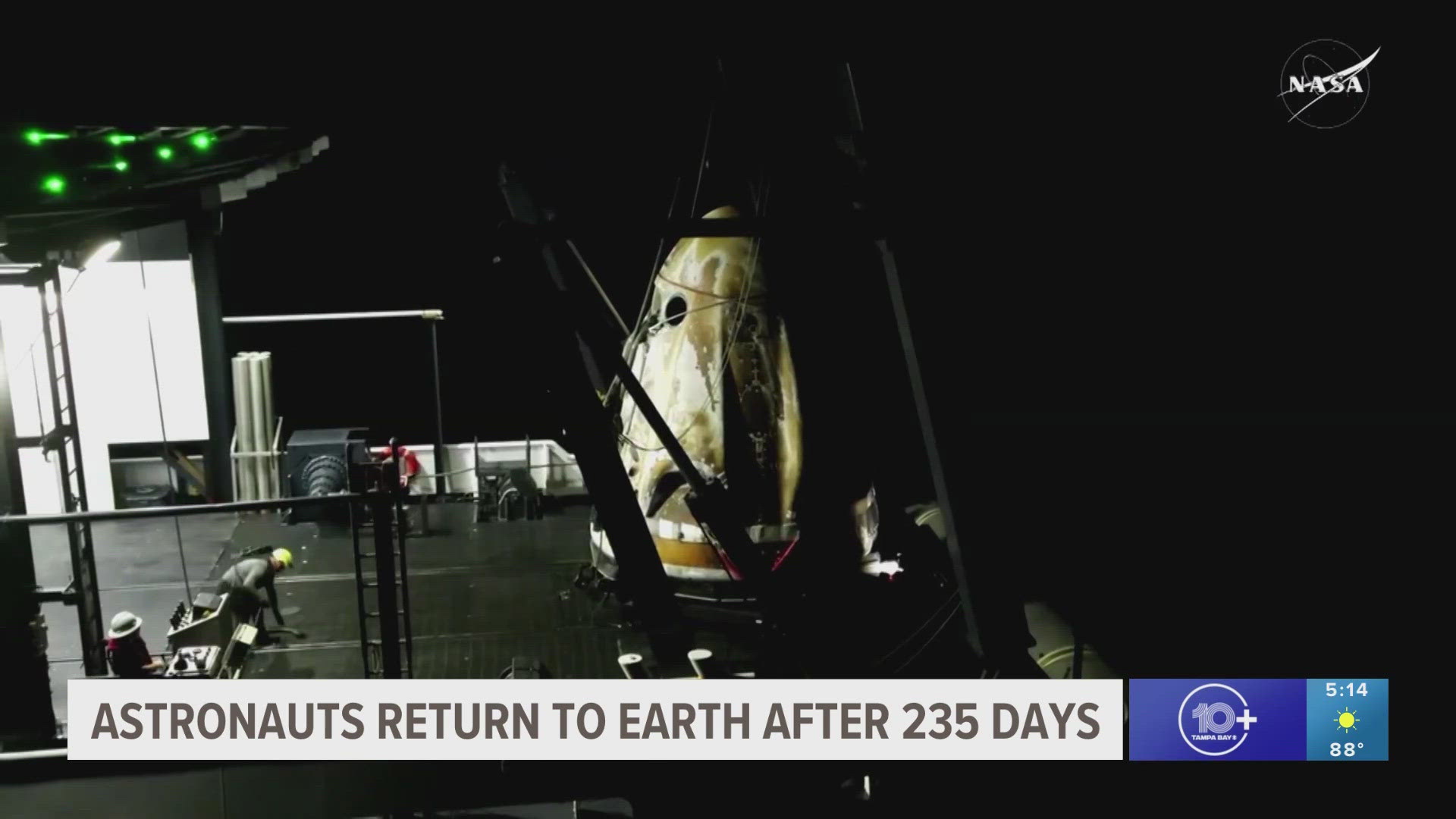CAPE CANAVERAL, Fla — SpaceX's Dragon spacecraft loaded with 7,300 pounds of scientific experiments and other "vital" cargo is making its way to the International Space Station following a successful launch from Florida's coast.
The company's 22nd commercial resupply mission lifted off from Kennedy Space Center Launch Complex 39A as the Falcon 9 engines came alive.
Roughly 15 minutes after liftoff, spacecraft separation was confirmed as the Dragon spacecraft, carrying cargo including squid, "water bears" and cotton, among other things, floated off into space.
The Dragon spacecraft will now continue its trek toward the orbiting laboratory for an autonomous docking Saturday around 5:13 a.m.
Missed the launch? You can catch all the action below:
----------
Original story
It's that time again. The International Space Station is in need of a delivery, and SpaceX is ready to lend a hand with its 22nd commercial resupply mission.
A collection of scientific research and technology demonstrations will fly to the orbiting laboratory on SpaceX's upgraded Dragon spacecraft on June 3.
The commercial space company is targeting a 1:29 p.m. liftoff from Kennedy Space Center's historic Launch Complex 39A.
Among the dozens of experiments heading into space to support the Expedition 65 and 66 crews are tardigrades or "water bears" that NASA says can tolerate more extreme environments than most life forms.
Research involving the organisms will advance astronauts' understanding of stress factors impacting them while in space and allow researchers to develop countermeasures.
“Spaceflight can be a really challenging environment for organisms, including humans, who have evolved to the conditions on Earth,” said principal investigator Thomas Boothby. “One of the things we are really keen to do is understand how tardigrades are surviving and reproducing in these environments and whether we can learn anything about the tricks that they are using and adapt them to safeguard astronauts.”
Joining the microscopic will be the equally small symbiotic squid, which will interact with microbes to help develop protective measures to preserve astronaut health while on long-duration missions in space.
Researchers will also be looking to give cotton a boost by examining stressors that can toughen the material-producing plants.
"We are hoping to reveal features of root system formation that can be targeted by breeders and scientists to improve characteristics such as drought resistance or nutrient uptake, both key factors in the environmental impacts of modern agriculture,” principal investigator Simon Gilroy said. "Improved understanding of cotton root systems and associated gene expression could enable development of more robust cotton plants and reduce water and pesticide use."
NASA noted a portable ultrasound device, Pilote, tissue chip and new solar panels to help increase the energy available for activities at the ISS will also join the cargo headed to the orbiting laboratory.
You can catch the mission live by tuning into 10 Tampa Bay where we will be streaming on Facebook and YouTube.
What other people are reading right now:
- Tuesday marks 1 year since George Floyd's murder: 5 things that have changed
- Central Avenue’s stories: How George Floyd’s death conjures memories of 1967, 2014 deaths of unarmed Black men in Tampa
- Hiring teens is a great asset to one local business
- Tiger seen wandering neighborhood is thriving at new sanctuary home
- Flesh-eating 'black fungus' killing off patients who survived COVID-19
►Breaking news and weather alerts: Get the free 10 Tampa Bay app
►Stay In the Know! Sign up now for the Brightside Blend Newsletter



